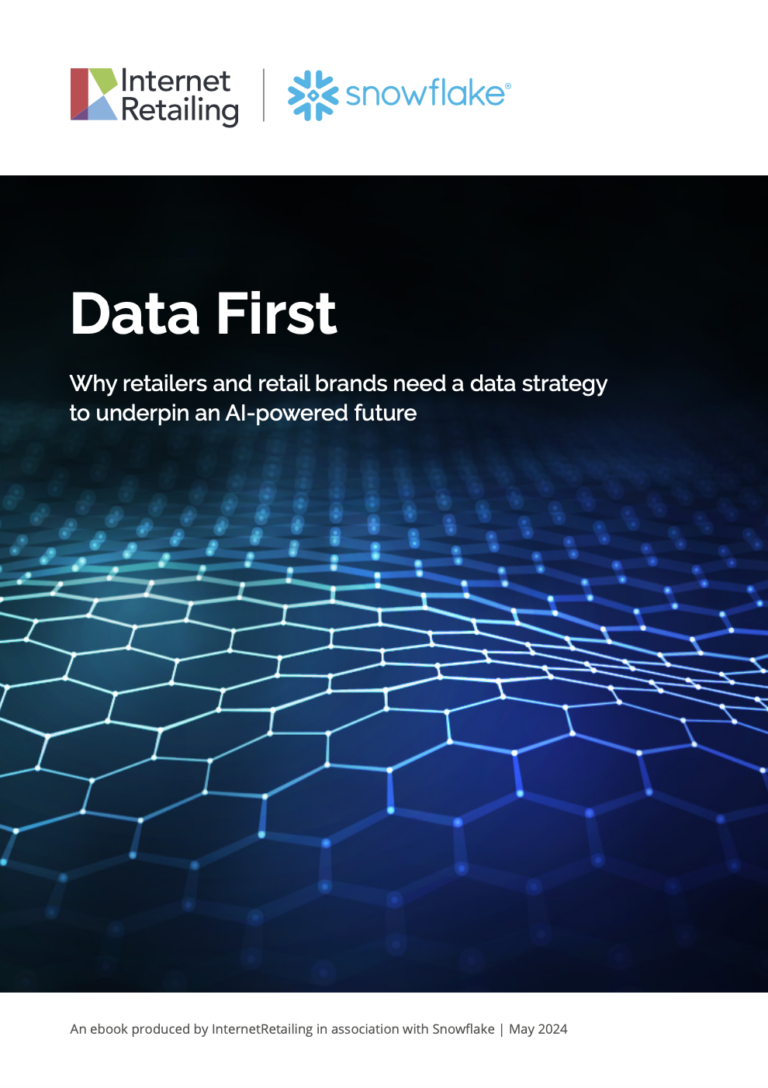Although using artificial intelligence to aid personalisation within retail delivers results, it’s not enough in itself to make retailers and brands stand out – the newly published DigitalX Digital Marketing Evolution 2024 report has highlighted.
The launch of ChatGPT in November 2022 changed the public perception of artificial intelligence (AI) almost overnight. Discussion of technology hitherto associated with sci-fi stories, and Skynet’s declaration of war against humanity in The Terminator was mentioned often, was suddenly everywhere.
In 2024, it’s a measure of how high awareness of AI has grown that a recent survey by MSi-ACI found that 70% of 1,000 UK consumers were aware of how generative AI is used to promote goods and services online.Some 45% of respondents thought the technology had influenced their purchasing choices, with Londoners (59%) most likely to think so. Less positively for a retail sector intent on using AI, the survey found concerns over information being less reliable. Half of over-55s surveyed worried about not being able to trust online sources due to AI-generated fake reviews, although that figure dropped to 28% of 18 to 34-year-olds.
The survey is, of course, measuring attitudes rather than the actual degree to which AI is actually being used within ecommerce, but nevertheless its results lead to other questions: If that’s what consumers think? Are they right to think so? Is AI really that influential in our purchase decisions?
To which an accurate answer is yes, probably and sometimes, although that’s not uniformly true and, anyway, some retailers, brands and sectors are using AI more effectively than others. More seriously, long before the public realised that AI was going to become important, retailers and brands were already using the technology within such facets of the business as personalisation and communications via chatbots. However, implementation has been, to adapt the famous William Gibson adage about the future, unevenly distributed.
A further complication is that it is difficult to imagine any retailer or brand downplaying their use of AI or documenting or detailing their problems with implementing the technology. Nevertheless, even accepting that it can be difficult to glean exactly what’s happening on the ground, it’s probably safe to suggest bigger retailers and brands have long been employing AI and that there’s a huge demand among smaller retailers to use the technology.
In this context, it’s revealing that, when Amazon recently released its first quarter report for 2024[1], CEO Andy Jassy attributed a jump in revenue at its cloud computing division, Amazon Web Services (AWS), to its focus on AI. Revenues at AWS for Q1 were $25bn, a year-on-year increase of 17%. It’s reasonable to suppose that many of the businesses employing AI, whether accessed via AWS or different stripes of competitors, do so within marketing and personalisation. That’s not to say these are the only uses – retailers such as M&S have been trialling machines that spot gaps on shelves – but they are areas of digital retail where AI seems to be a natural fit.
The data conundrum
As to why that’s the case, it’s in part because personalisation relies on data. However, there’s a complication here. In so many respects, such data has become far more difficult to manage over recent years. Firstly, there are regulatory factors to consider. Even if the EU’s General Data Protection Regulation (GDPR) legislation didn’t cause the ecommerce bonfire that some envisioned as a worst-case scenario, it has created a world where businesses need to be far more careful about how they treat personal data.
This has happened at the same time as many consumers have become more careful about how they share data. One emerging theme in consumer behaviour is to use a secondary email address in dealings with all but the most trusted businesses. Or to use a service such as Hide My Email and iCloud+ to avoid being identified at all.
At the same time, the business imperative to use data and the insights it yields have rarely been stronger. Paradoxically, this need is being driven in part by consumers who have grown to expect personalised services and who will be critical if, for example, they are offered products they’re not interested in or, worse, seem downright inappropriate. Effectively, this means retailers and brands are caught in a kind of pincer movement between a reluctance to share information and increased customer expectations.
The second factor that plays in here is the need to deal with different kinds of data. In order to craft effective marketing campaigns and to personalise offerings, retailers and brands don’t just need data about specific customers, an address and so on, they need to understand, for example, what kinds of products different segments of the customer base are likely to buy if nudged.
This is before we have begun to talk about the data sets around product descriptions and around where those products are located, supply chain data and so on. Or, more complex still, starting to make the most of contextual data, so that a consumer idly browsing on their phone at 8pm is treated very differently to a consumer standing at the checkout of a bricks-and-mortar store.
The sheer number of variables goes some way to explaining why it can be such a challenge using AI within digital services. While the problem of data silos producing inconsistencies that cascade through the business is nowhere near as prevalent as it was a decade ago, that issue still exists. If a company cannot even trust its own data, how can it hope that setting AI to work on this data will produce coherent results and yield actionable insights?
That said, as our case studies in this report show, retailers and brands are grappling with the issues here. One of the points that came through doing background interviews for the report is that it’s no good thinking of AI as a quick fix. Rather, you need to work with teams and show them how using AI can make them more effective. Businesses need an AI strategy that includes people in the equation.
Take the relatively straightforward example of copywriting. If you can automate product descriptions so that 80% of the work is done by AI, the copywriter can better focus on those areas where refining messages needs the human touch by putting the zing in the sell, adding excitement and expectation and refining key messages.
Or, to look at that another way, providing a company’s data is robust and its use of both that data and technology is underpinned by a clear strategy, AI can help human beings better personalise marketing. A decade on from now, we would guess, using AI in these kinds of ways within ecommerce will seem routine – just a part of how the business works.
This feature, authored by Jonathan Wright, originally appeared in the Digital Marketing Evolution 2024 report, which was launched at the DigitalX conference – part of the RetailX Event’s Spring Festival.
Inside the report we discuss how marketers need to deal with the challenges here at the same time as grappling with advances in fields such as deep tech, AI, data science, social trends, platforms and behavioural analysis.
Case Studies includes Shein, Ugg, Deckers Brands, John Lewis, Sweatty Betty, Nike, HP, Sainsburys, L’Oreal, Pepsico and Kingfisher.
Stay informed:
Our editor carefully curates a daily newsletter filled with up-to-date news, analysis and research, click here to subscribe to the FREE newsletter sent straight to your inbox and why not follow us on Linkedin to receive the latest updates on our research and analysis – UK, Europe and global.











